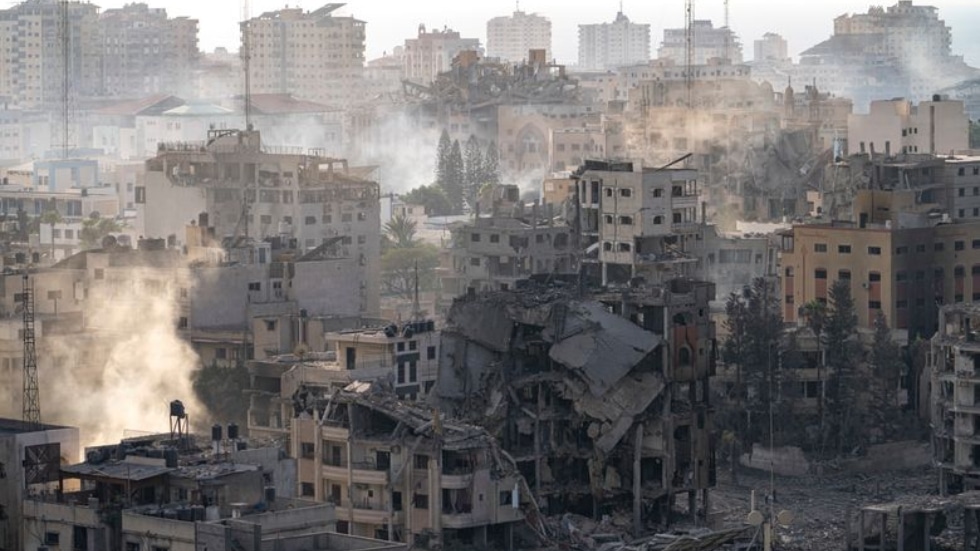Special rapporteurs with the United Nations have rebuked Israel after its forces opened fire on hundreds of Palestinians gathered around aid trucks in the Gaza Strip, killing at least 112 people and injuring nearly 800 more.
In a press release issued on Tuesday, a group of seven UN experts accused Israel of wielding food as a weapon against Gaza’s population of 2.3 million, saying it was “intentionally starving the Palestinian people.” They added that IDF troops were now “targeting civilians seeking humanitarian aid,” citing the February 29 ‘Flour Massacre’ in Gaza City.
“The attack came after Israel has denied humanitarian aid into Gaza City and northern Gaza for more than a month,” they wrote, saying Tel Aviv “must end its campaign of starvation and targeting of civilians.”
The slaughter unfolded last Thursday as a large crowd of Palestinians gathered to wait for desperately needed aid deliveries. As a convoy carrying wheat flour passed through the area, the situation became chaotic, with people racing to grab supplies from the aid trucks, witnesses told the Associated Press.
IDF troops were said to have fired on the crowd in two bursts, the first of which sent many scrambling for cover. When they reemerged and returned to the aid trucks, the soldiers continued shooting, the witnesses added, killing over 100 civilians and injuring at least 760.
According to Al Jazeera’s Ismail al-Ghoul, who was present for the massacre, Israeli tanks “advanced and ran over many of the dead and injured bodies” after the shooting.
More Footage of Thursday’s Gaza Flour Massacre
Israel claims it only fired warning shots into the air… pic.twitter.com/7cA3YdcTXD
— (@OopsGuess) February 29, 2024
IDF spokesman Rear Adm. Daniel Hagari has insisted the soldiers merely fired “warning shots” in an effort to secure the area, claiming the resulting carnage was instead caused by a stampede. However, the acting director of the Al-Awda Hospital, Dr. Mohammed Salha, has contested that account, noting that most of the 161 patients he treated that day had suffered gunshot wounds.
The UN experts went on to say that Israeli forces had fired on humanitarian aid convoys on “several” other occasions during the Gaza war, “despite the fact that the convoys shared their coordinates with Israel.”
In early February, a column of 10 aid trucks bearing UN insignia was forced to turn back after an Israeli naval vessel shelled one of the vehicles, scoring a direct hit which destroyed much of its cargo.
#Gaza this morning a food convoy waiting to move into Northern Gaza was hit by Israeli naval gunfire – thankfully no one was injured@UNRWA pic.twitter.com/1kvShgX6MG
— Thomas White (@TomWhiteGaza) February 5, 2024
Last Saturday, just days after the February 29 massacre, nine others were killed in a separate Israeli attack on an aid truck, according to local press reports. Yet another shooting took place the following Monday, when IDF troops again fired on Gazans waiting for flour, though it remains unclear whether any were killed in the incident.
The flow of aid into Gaza has slowed to a trickle amid near-constant Israeli bombardment, which has devastated much of the coastal enclave over five months of war. More than 1.9 million Palestinians have been displaced during the onslaught, with hundreds of thousands now seeking refuge in the southern city of Rafah amid fears of an IDF ground invasion.
Israeli forces have once again opened fire on desperate Palestinians seeking aid from a supply convoy entering Gaza City.
This is the second such attack since last Thursday’s ‘flour massacre’ which killed at least 117 people ⤵️ pic.twitter.com/kiwEM1F6KI
— Al Jazeera English (@AJEnglish) March 5, 2024
The UN and other rights groups have warned of a looming humanitarian catastrophe, with the deputy head of the World Food Programme, Carl Skau, saying more than 500,000 people were now at immediate risk of famine. One in six children under the age of two are acutely malnourished, while the risk of disease has spiked dramatically thanks to squalid conditions in Gaza’s overcrowded refugee camps.
More than 30,000 Palestinians have been killed in Israeli strikes since October, with thousands more missing and feared dead, according to Gaza health officials. Tel Aviv launched its military operation in the wake of Hamas’ October 7 terrorist attack, which killed more than 1,100 people and saw around 250 captured by Palestinian fighters.
































